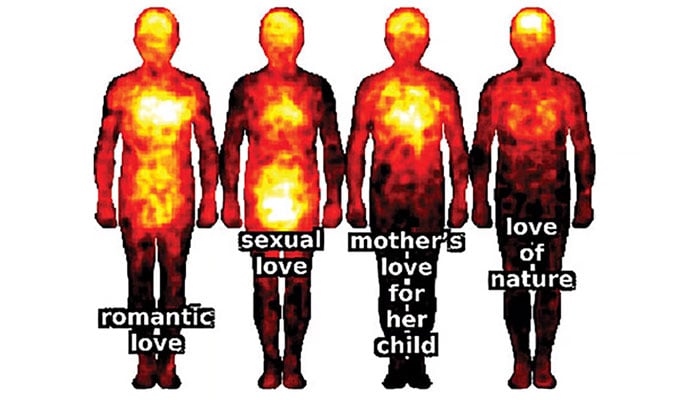We know what love is — But where do we actually feel it in our bodies?
Researchers looked into 27 different types of love
September 20, 2023

Love plays a vital role in human development, fostering connections and mitigating feelings of isolation throughout various stages of life.
Naturally, there exist diverse forms of love, each linked to distinct behaviours, such as self-love, affection for animals, parental devotion, romantic and sexual attraction, and friendship.
However, do these various expressions of love manifest differently within our physical beings, and is there variance in their intensity of emotional experience?
Researchers have recently mapped where and how powerfully people experience various forms of love, including romantic love and love for strangers.
These findings highlight the impact of context on subjective emotions and contribute to existing research on the human experience of feelings.
There are various types of love associated with different actions, such as self-love, love for animals, parental love, romantic and sexual love, and friendship love.
But how do these different kinds of love feel in our bodies? Is there a difference in the intensity of our emotional responses to them?
The research from from Aalto University in Finland which was published in the journal Philosophical Psychology, has gone further, mapping the human experience of 27 different types of love.
Participants were asked to colour in silhouettes of bodies to show where they felt bodily sensations when experiencing a certain type of love.

They were also asked how pleasant the feeling was, how intense it was physically and mentally, and how it was associated with touch. Lastly, participants were asked to rate the closeness of the different love types.
They were also questioned on the sensation's pleasantness, bodily and mental intensity, and touch-related aspects. Finally, participants were asked to rate how closely the various types of love were related.
All forms of love, the researchers discovered, originated in the skull, but they varied in how they spread to other areas of the body—some spread to the chest, while others affected the entire body.
The authors of the current study emphasise that their goal was to analyse how the environment and object of love affected subjective experiences rather than to develop universal categories or a "rigid taxonomy" for love.
They claim that their research provides crucial empirical evidence on the parallels and divergences between various forms of love and shows that there is substantial variety among them. In essence, the researchers argue against treating love like a unique, distinct feeling.
Further behavioural and neuroscientific studies may provide a greater understanding of the extent to which different love types share similar neural activation patterns.











